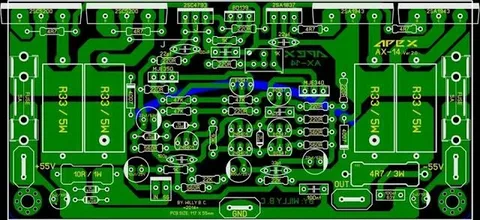Test engineering is a critical component of the software development lifecycle, ensuring that products meet quality standards before being released to the market. This practice involves the design, execution, and automation of tests to identify defects, improve functionality, and guarantee a seamless user experience. Effective test engineering helps prevent bugs, saves time in the long run, and enhances overall software reliability.
What is Automated Test Development?
Automated test development involves using specialized tools and scripts to automate the execution of test cases. Unlike manual testing, where testers run tests one by one, automated tests can be executed rapidly and repetitively, making them more efficient and less prone to human error. With automated test development, teams can test large portions of the software in a fraction of the time.
Benefits of Automated Test Development
- Faster Testing Cycles: Automated tests run significantly faster than manual tests. This enables teams to conduct more tests in less time, speeding up the overall development process.
- Consistency and Accuracy: Automated tests are precise, reducing the possibility of human error. Since the same script runs each time, results are consistent, improving the reliability of the test outcomes.
- Cost Efficiency: Although setting up automated tests requires an initial investment, the long-term savings are considerable. Reduced testing time leads to lower overall costs and quicker time-to-market.
- Increased Test Coverage: With automation, testers can cover more test cases in a shorter period, including complex scenarios that would be time-consuming and labor-intensive with manual testing.
Types of Automated Testing
- Unit Testing: Unit testing involves testing individual components or functions of the software to ensure they work as intended. Automated unit tests are essential for detecting errors early in the development process.
- Integration Testing: Integration testing verifies that various modules or components of the software work together as expected. Automation helps streamline this process, ensuring all integrated parts function smoothly.
- Regression Testing: Regression testing ensures that new code changes do not introduce new bugs or break existing functionality. Automated regression testing is invaluable in fast-paced development environments where code changes frequently.
- Performance Testing: Performance testing evaluates how the software performs under various conditions. Automation helps simulate real-world loads, allowing teams to identify performance bottlenecks and optimize the system.
Best Practices for Automated Test Development
- Choose the Right Tools: Selecting the right testing tools is essential for success. Popular tools like Selenium, JUnit, and TestNG offer different capabilities suited to various testing needs. Consider the type of software, the complexity of tests, and your team’s expertise when choosing tools.
- Write Maintainable Test Scripts: Test scripts should be easy to maintain and update. Avoid complex code and keep your scripts modular. This ensures that tests remain functional even as the software evolves.
- Keep Tests Simple and Focused: Each test case should focus on a single function or feature. This simplifies debugging and helps quickly pinpoint issues when they arise.
- Regularly Review and Update Tests: Software frequently changes, and automated tests need to adapt accordingly. Regularly reviewing and updating test scripts ensures they remain relevant and accurate.

Challenges in Test Engineering and Automation
- Initial Setup Complexity: Setting up automated testing frameworks can be time-consuming and require specialized knowledge. However, once established, the process becomes much faster.
- Maintaining Test Scripts: As software evolves, automated test scripts may require frequent updates. This can be resource-intensive if not managed correctly.
- Tool Compatibility: Some testing tools may not be compatible with all types of software or technologies. It’s crucial to evaluate tool compatibility before making a selection.
Future of Test Engineering and Automation
The future of test engineering and automation looks promising. With the rise of AI and machine learning, automated testing will become smarter and more adaptable. These technologies will allow tests to evolve automatically based on changing software behavior, reducing the need for constant manual intervention.
Furthermore, DevOps and Continuous Integration (CI) practices are driving the need for faster testing cycles, making automated testing an essential practice for modern software development teams. Automation will continue to play a crucial role in reducing time-to-market and ensuring the delivery of high-quality software products.
Conclusion
Test engineering and automated test development are indispensable parts of the software development process. By automating tests, software teams can improve efficiency, accuracy, and coverage while reducing the risk of human error. Though there are challenges, the benefits far outweigh them, especially as automation tools and techniques continue to evolve. By following best practices and choosing the right tools, teams can ensure high-quality software releases in less time.






